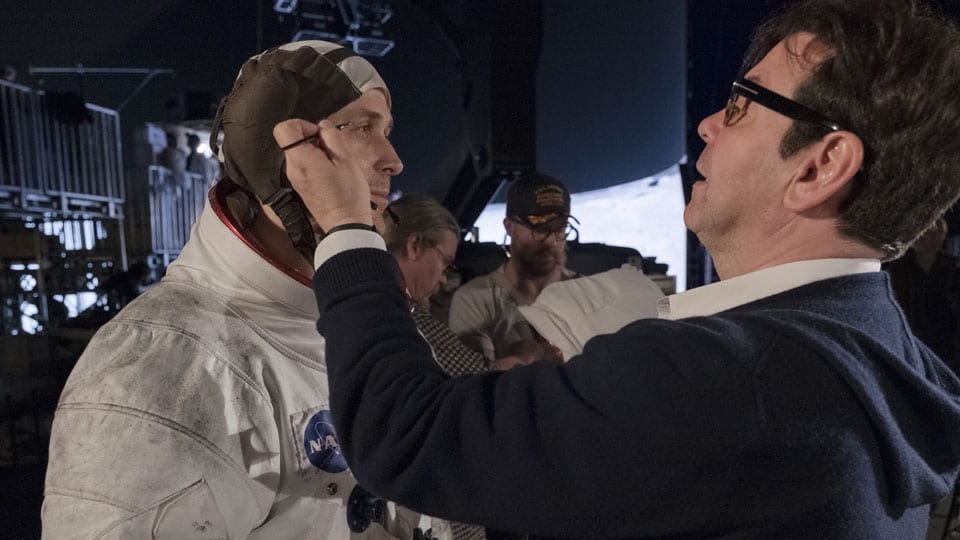
Rio, from Blue Sky Studios and Twentieth Century Fox Animation, is the biggest, most ambitious animated film for the studios. The film, which was released in April, is one of 18 animated feature films vying for an Oscar nomination this year.
Rio is Saldanha’s fifth animated feature after directing or co-directing Ice Age: Dawn of the Dinosaurs (2009), Ice Age: The Meltdown (2006), Robots (2005) and Ice Age (2002). In addition, he was nominated for an Oscar for the 2002 short film Gone Nutty.
“I’m originally from Rio and I’ve been living abroad for 20 years now. I always wanted to find some way to share some of that culture from the place where I grew up,” said Saldanha. “But I never knew exactly how I would do that. Then when I got into animation, I started seeing all these other movies being set in exotic locations, and I thought, ‘Nobody has ever really explored Rio in animation.’”
“That’s how it all started as a personal wish to come up with a story that took place in Rio, and would use Rio as its vibe,” he added. “It’s very close to my heart.”
He explained that authenticity was one of his key objectives and that “the most nerve-wracking moment for me was the premier in Rio with a bunch of Brazilians around me, seeing how they would perceive the movie.”
“Of all of the movies we’ve made, this one was probably the most difficult because of the scale of the elements,” said Saldanha. “We had to build the city in CG and it’s a preexisting place. So it’s not like we’re creating the ice age where we could take a lot of liberties. I wanted to be fairly true to the city and the landscapes that I wanted to present.”
That included creating Rio’s famous Carnival parade, with some 40,000 people dancing in the bleachers and riding on elaborate floats. Plus, the film called for animated characters that included humans, birds and even marmosets.
Saldanha explained that it took a team of 350 artists at New York-based Blue Sky Studios almost three years to bring Rio from preproduction to the big screen.
“The script was the key,” he said. “Once we got the script down pat, we started to storyboard the sequences, and when we hit the musical moments where the scene depended on the music – where we needed to get the music done first – we put placeholders and temp music in there.”
In fact, the film relies heavily on music to tell the story – with a combination of Brazilian sounds and contemporary American music. The soundtrack features a stellar musical cast led by will.i.am (of The Black Eyed Peas), Jamie Foxx, Bebel Gilberto, Taio Cruz, Ester Dean, Siedah Garrett, Jemaine Clement, and famed Brazilian percussionist Carlinhos Brown, along with film composer John Powell – all performing under the guidance of executive music producer, Sergio Mendes – one of the most successful Brazilian musical artists of all time.
Saldanha explained that relying so heavily on music posed some key challenges. “We’d never dealt with music so intimately connected with a project. The music had to be embedded into the story to give the scene authenticity – a mixture of Brazilian and other rhythms. We needed to make sure that we had all the music designed and written so we could work on the timings for the animation and develop the storyboards from that.”
To capture the wide vistas of Rio and the excitement of the city’s famous Carnival with fluid and realistic camera movements, Saldanha recruited renowned Brazilian live-action cinematographer Renato Falcão early in pre-production.
“This movie was very specific because I wanted to shoot the city in a way that a cinematographer would see it,” said Saldanha. “You needed to feel that you were there. Renato has a lot of experience shooting in Rio, so he understood the vibe I was looking for and what I wanted to get out of the cameras.”
Falcão experimented with different lenses and studied what a live-action motion picture camera could reveal about depth of field, and how that information could be incorporated into the staging of the action and characters of this animated film.
“He was a great ally in terms of planning and designing the sequences and making sure that the movie felt cinematic,” Saldanha added. “That was a great addition to the process. We never had a cinematographer before on our animated projects but he helped us define a camera language. It’s becoming a trend now in animation. A lot of the studios use the help of a DP to get a better feel for the cameras.”
Saldanha also credits art director Thomas Cardone (who collaborated with him on Robots and Ice Age: The Meltdown) with developing the film’s vibrant visual palette. Cardone traveled to Rio with Saldanha to gather reference photos and footage and study the natural lighting of the city.
“I’ve been working with Thomas forever. He’s been on pretty much all of my projects and he understood what I was going for in terms of color. The color is something I was very particular about – especially the palette of the movie,” said Saldanha. “It was a feast for the eyes in terms of the art direction, but also a nightmare because you have to balance all the colors and all the elements of the movie.”
Rio is Saldanha’s third collaboration with editor Harry Hitner. “Harry came on board to work with me on Ice Age 2,” he said. “When you build your crew, you create a connection. You create a shorthand way of communicating and doing things and it almost gets to the point where you start reading each other’s minds. In a hectic production, how you connect with your crew is very important.”
“Editorial was the department that probably worked the longest hours, because it starts from the very beginning of production and it runs all the way to the very end. We’re still cutting and making adjustments and putting sound in up to the last minute,” explained Saldanha. “So editing is my everyday life.”
He also credits animation supervisor Galen Chu with “finding the personality of the animals that we had to animate.”
“Birds are difficult because it’s hard to create expression and to emote, partially because the eyes are off to the side,” he said. “It’s all about the animators’ contributions to each of the personalities. I love that process where each animator is an actor and each animator can bring their own style and their own imagination to the characters.”
“The technology is great but you have to tell a good story,” Saldanha added. “It’s vital to have the right people in the right spots to make the best film you can. Making a film like Rio is a long marathon and you always have to run at a sprint speed, so you have to have people who are motivated and passionate about the film in order to reach the finish line.”





